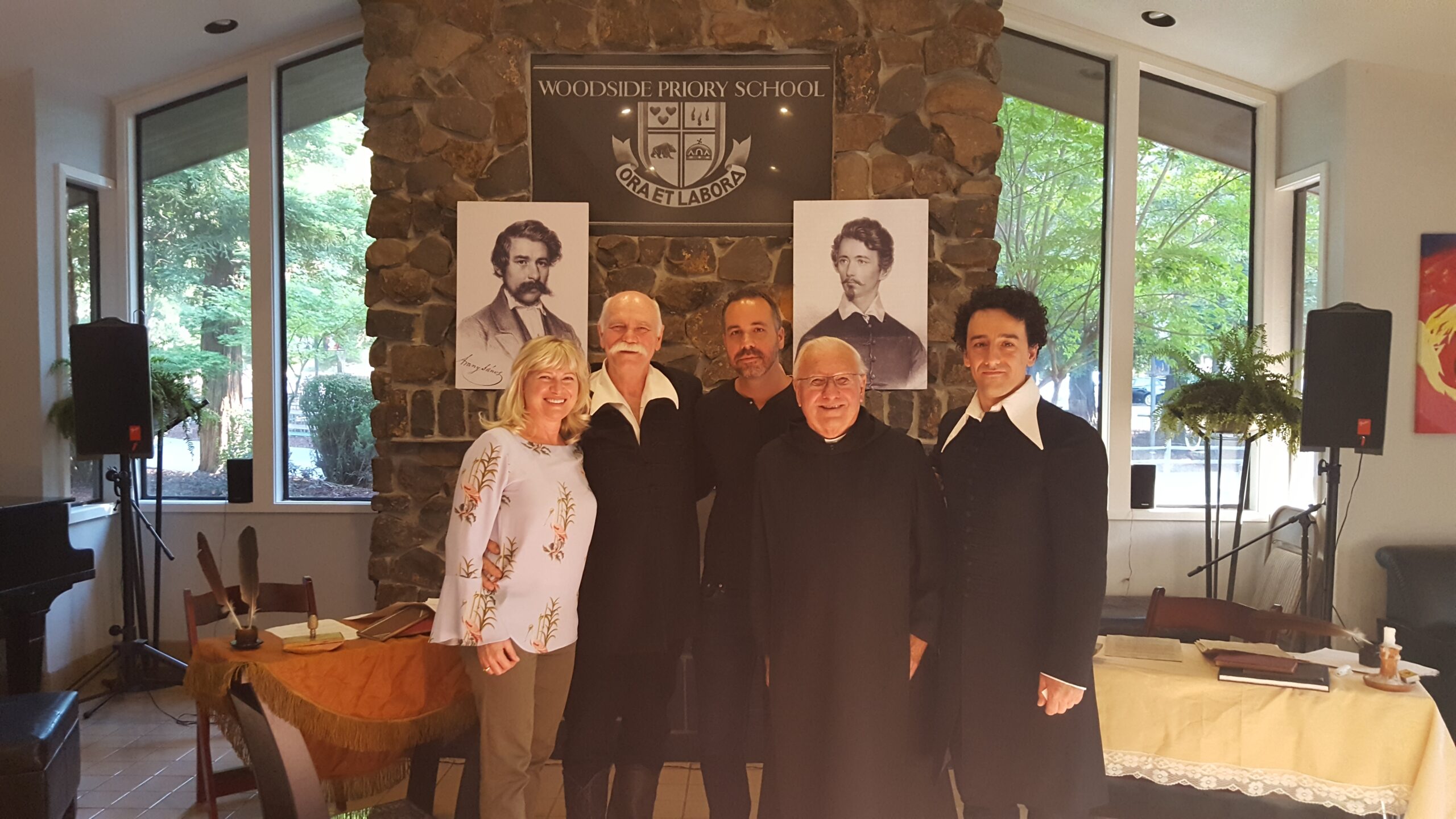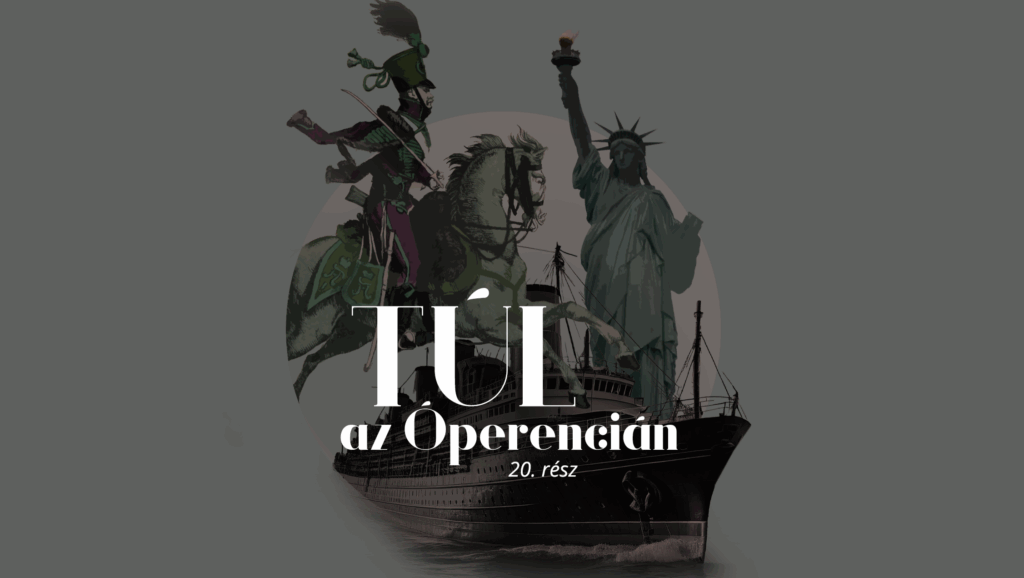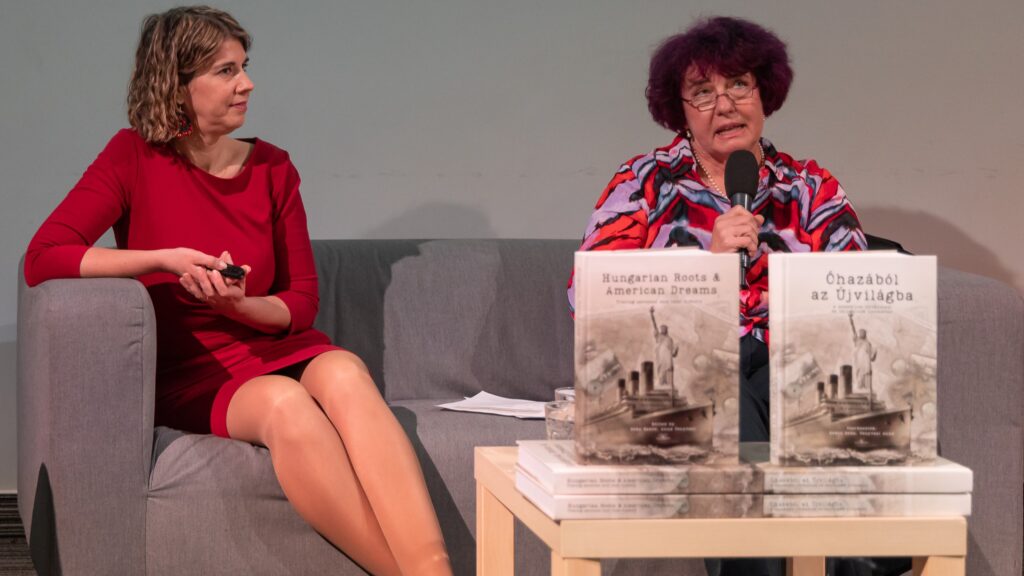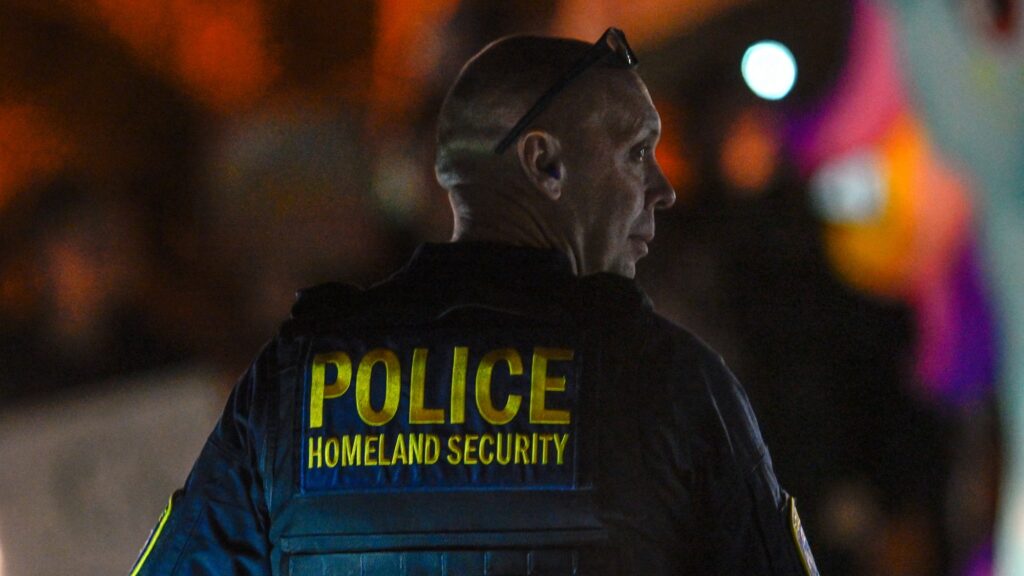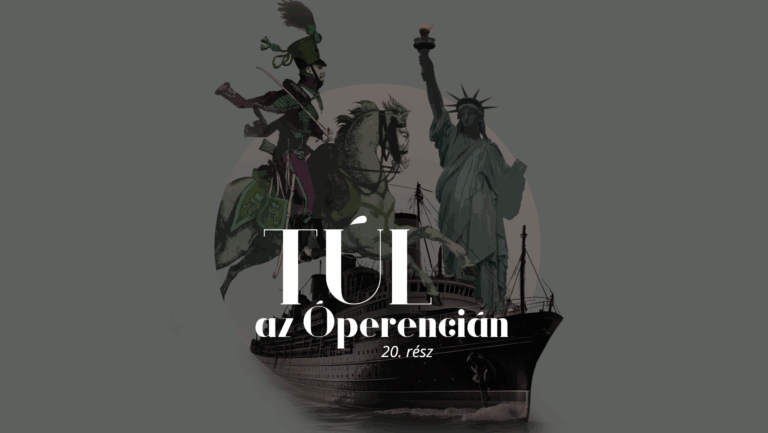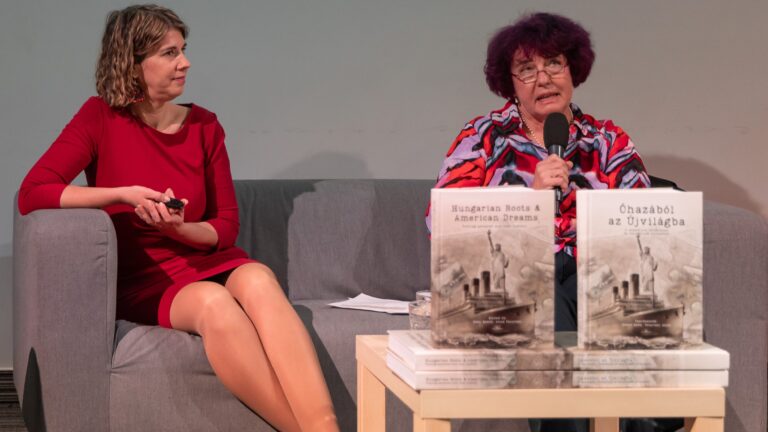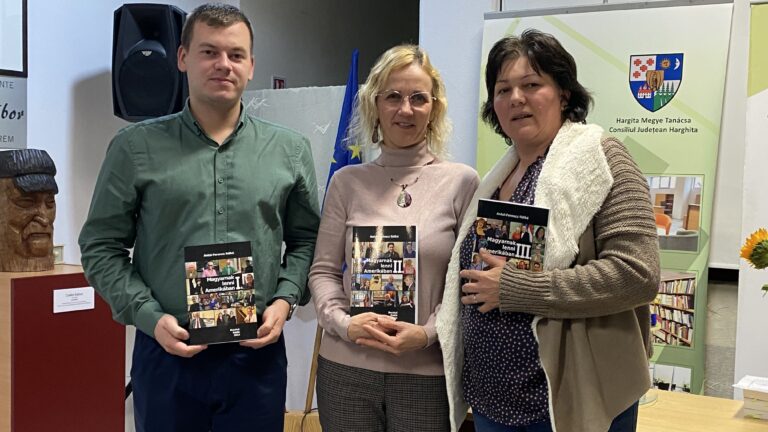Éva Pápai left Hungary on her own at the age of 21, first to Germany, and from there she immigrated to America. She settled in San Francisco, where—while holding three jobs, raising a family, and later running her own business—she has actively supported the Hungarian Catholic Mission for 35 years, first as a volunteer and later as a leader, in harmony with the Mission’s spiritual leader, Father Maurus Németh. They also work closely with the local Reformed priest to keep the broader local Hungarian community together.
***
When and how did you leave Hungary?
In 1986, at the age of 21. After completing a healthcare vocational high school, I enrolled in a three-year laboratory technician college program while working at the State Clinics in Budapest. I took the entrance exam for the medical state university in May 1986, but missed the cutoff on the oral physics exam by just three points. Meanwhile, my family had moved to Eger, and I was living in a very small flat in Budapest. I found out that there was a professional group in Munich, Germany, that supported newly graduated Hungarian doctors, and I contacted the organizer there in the hope of finding a job with a lab technician qualification. However, shortly after my arrival, I discovered that this program wouldn’t be legally viable for a lab technician, so I couldn’t work legally in West Germany…Since I didn’t want to return to Communist Hungary at all, I applied for political asylum and was placed in a refugee camp. When I left Hungary, no one knew about my plans except my professor; even my mother believed that I was only going to a hematology conference in Germany. Nevertheless, the Hungarian police interrogated her so harshly for months that she ended up in a psychiatric clinic, which deeply affected my younger brothers too. Three months later, I was officially informed that I could no longer stay in West Germany, but I could immigrate to Australia, Canada, or the United States—these were the countries accepting Hungarian refugees at the time. I chose the last option, and I arrived in New York from the refugee camp in Germany, along with 13 other Hungarians, in November 1986.
You said it didn’t work out, so you ‘fled further’ to the West Coast…Why?
After the clean, green environment of Munich, 13 of us lived in a dirty, cockroach-infested two-bedroom apartment in a neighborhood full of drug addicts in Brooklyn…We received 90 days of government support, during which my diploma was translated, and I received help writing a résumé. However, after that, we were left on our own. I was afraid and felt hopeless, but still, I tried to learn English and searched for a job. By great luck, one of the International Rescue Committee (IRC) officials showed my résumé to her mother, whose boss, the famous Dr. Atkins, invited me to a job interview at his lab. He needed a technician for cell analysis, and although I knew little English, I had a strong Latin-based technical vocabulary and passed the test with 100 per cent twice. During the oral part, I understood more Latin words than English ones, but still, I was hired on a three-month trial basis, and later made permanent. Meanwhile, I moved out with another girl to Queens. At the New Year’s Eve corporate party held at my boss’s penthouse, I saw the night skyline of New York for the first time. That was the first moment I felt that the city had its own beauty, and that I had a future in America. But I still didn’t like living there. After leaving for California, I returned to New York only 34 years later, in 2022.
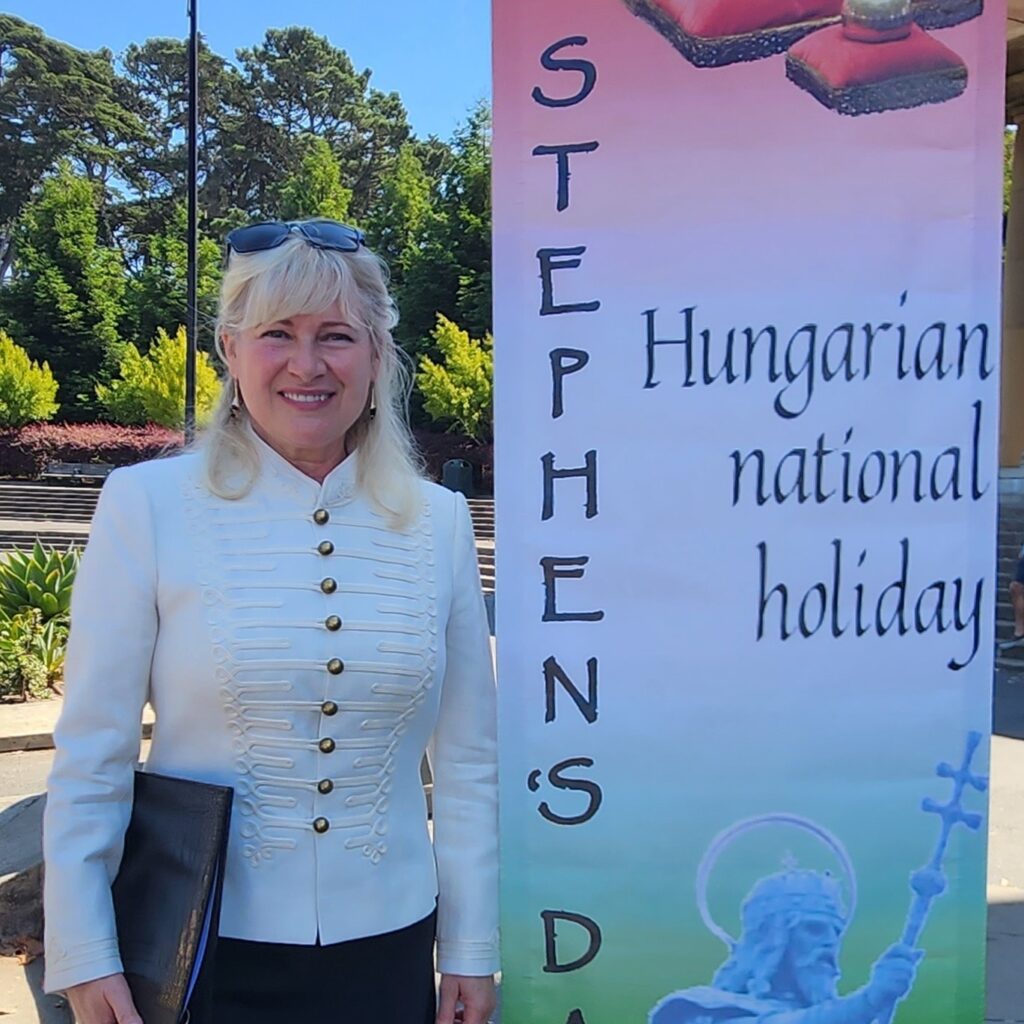
How did you end up in San Francisco?
By great luck again, my mother’s boss had a friend who was looking for a live-in nurse in San Francisco. I moved there in May 1988, but I quickly realized that the elderly man actually wanted more of a companion than a caregiver, so I left him after two weeks and rented a studio apartment from a Hungarian travel agent, Ferenc Tőrös, in Menlo Park, near Stanford Hospital. I found a job at a nearby lab, but I very much wanted to work in the hospital. Over the next year and a half, I applied 16 times before I was finally hired—full-time and on the day shift. I felt like I had struck gold. I worked there from 1991 to 2022, and in my last five years, I was a clinical lab supervisor, overseeing a staff of 16. After my eight-hour hospital shift, I worked from 4 to 8pm at Mills-Peninsula Hospital, and on weekends at the Palo Alto Veterans Hospital from 5 to 10am. In total, I worked 70 hours a week for seven and a half years, which allowed me, already by June 1992, to buy a three-bedroom house in Santa Clara, which I rented to university students, to support myself.
When did you get involved with the Hungarian Catholic Mission, and how did you become its president?
When I told Ferenc Tőrös that I was looking for a Catholic church, he said: ‘We not only have a Catholic church here—we have a Hungarian Catholic church’, and took me to Portola Valley, to this beautiful green area. Six Benedictine monks from Pannonhalma, who had fled Hungary in 1955, settled in the San Francisco Bay Area in 1957. Father Egon Jávor and his companions founded a Benedictine community and high school, which became known as Woodside Priory School and also housed the Hungarian Catholic Mission in the early 60s.
‘As long as the community needs me and my health allows, I will continue’
At the time of my arrival, Kati Szabó was the president of the mission, and I volunteered every weekend to help her. Father Maurus saw my energy, strength, and creativity, so ten years after my first visit, in 1998, he asked me to become president of the mission. In the meantime, I got married and had two children, and in 2003, I told him that, with two kids in diapers and launching my own real estate business, I could no longer manage the presidency. Fortunately, a wonderful and capable woman named Ildikó Zentai had just moved here from Canada with her husband. Their children were already grown, so in 2004 she was elected president, and I stayed on as vice president, continuing the behind-the-scenes work and staying in touch with the community. Ten years later, Ildikó—at only 60—died of a tragic illness, and I had to step back into the president’s role overnight. I was re-elected afterwards and have been leading the mission again for the past ten years. As long as the community needs me and my health allows, I will continue. However, everyone is replaceable, and when the time comes, I truly hope there will be someone to whom I can pass the baton.
What does this actually mean in practice? According to the Mission’s website, it has three key missions: faith, Hungarian culture, and charity.
Yes, our primary goal is, of course, nurturing faith. Every Sunday at 11am, we hold a Mass in Hungarian. Back in the 90s, we introduced the custom of gathering after Mass for a small social event and a free agapé, sponsored and prepared by a volunteer family with weekly rotation. Once, when it was my turn, I realized it was easier for me to bake a stuffed pork loin the day before than to make 150 sandwiches that morning, so I brought a hot meal, and since then, others have done the same—it works better for everyone. Since the 2010s, many new Hungarian families—mostly intellectuals—have been drawn to Silicon Valley. Those who are interested in practicing their Catholic faith in Hungarian in the Bay Area eventually find us and join the community.
Promoting Hungarian culture is a major task in itself. We celebrate all national, religious, and other holidays each year—15 March, 20 August, 23 October, Christmas, Carnival, Easter, Mother’s Day, Father’s Day, and so on—often with invited representatives from the Hungarian government, diplomatic mission, and performing artists. I inherited these traditions as president and consider it my duty to preserve and carry them forward. Regarding cultural events, we try to cater to all tastes in music and literature: we host performers of pop music, classical music, theater companies, and folk dance groups. When we receive requests through grants funded by the National Cultural Fund (NKA), we help organize American tours for those artists, coordinating with other Hungarian communities across North America to reach more people and share the high travel costs. This takes a huge amount of time, but we’ve successfully brought many performers here—much to the joy of the local Hungarian community.
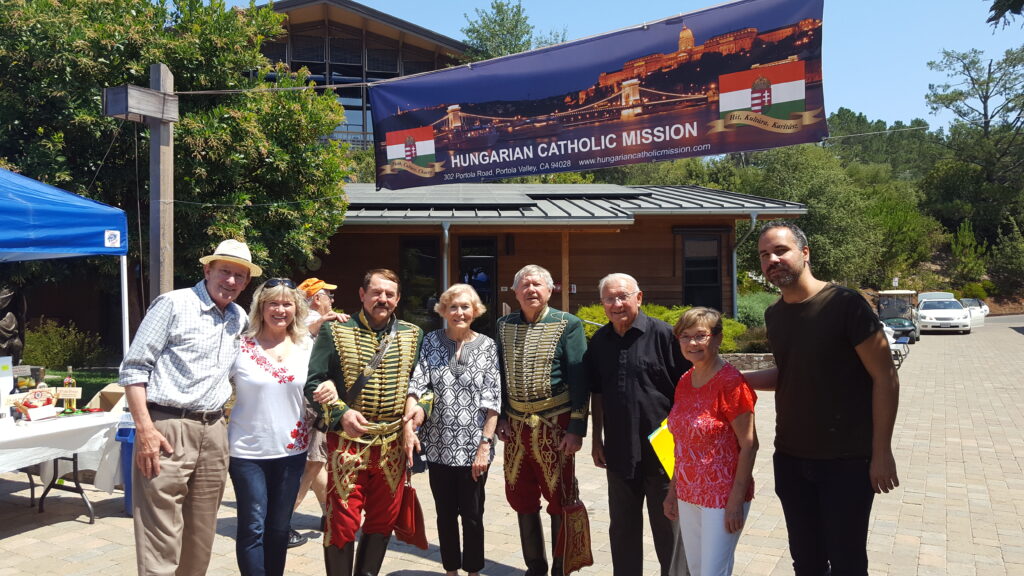
Our venue also hosts the Kányádi Sándor Hungarian weekend school every other Sunday, along with two Hungarian scout troops founded in 1969, the 77th Béri Balogh Ádám boys’ troop and the 43rd Losárdy Zsuzsanna girls’ troop. They have two sponsoring bodies: the Hungarian Reformed Church and the Hungarian Catholic Mission. On every other Sunday, our little chapel fills with Hungarian families and young children. Additionally, the Eszterlánc folk dance group, founded in 1977, and its children’s group, Mazsola, are still active today. They currently rehearse at the Hungarian Cultural Center, which is affiliated with the Reformed Church, but they also often perform at our events.
How large is your community, and what are the age demographics?
It has changed significantly over the past 30 to 40 years. Previously, the community consisted mostly of members of the 1956 generation. In the 80s and 90s, very few young Hungarian immigrants arrived in Northern California. Then, in the early 2000s, a new wave of immigration began, including many who stayed illegally. Since the 2010s, many young professionals have arrived in Silicon Valley, and their children have revitalized our school and scouting programs. Currently, 83 children are enrolled. The community has become much younger lately, which is great news. We also face a serious challenge: the 25–35 age group is not familiar with the culture of volunteerism, and many don’t understand that there is no community life here without that commitment. There are wonderful exceptions, and we’re seeing more and more parents helping. As for the Catholic Mission, our membership essentially has two large age groups: those over 70 and those under 45, but there are very few of us in the 40–60 generation—that’s why we’d need more help from the younger generation.
What does the third mission—charity—look like in practice?
Helping those in need has always been a central goal of the Catholic Mission. These days, we primarily support Hungarians in Transcarpathia (Ukraine), though in the past we’ve helped Hungarian communities in Transylvania (Romania), too. We’ve also sent financial aid to institutions for the blind, orphanages, and churches in need of renovation. Requests for help are constantly reaching Father Maurus—for example, from a small community where people can’t attend church because the walls are soaked through or the chimney has collapsed. In such cases, a fundraising campaign is launched, with different Catholic organizations, including ours, contributing. But we don’t just send support to faraway places; there have been local Hungarian families who suffered some kind of tragedy, and we organized collections for them as well. Father Maurus receives a great deal of gratitude, and we always share these messages with the congregation so they know that our contributions have helped an entire church or community renew itself somewhere.
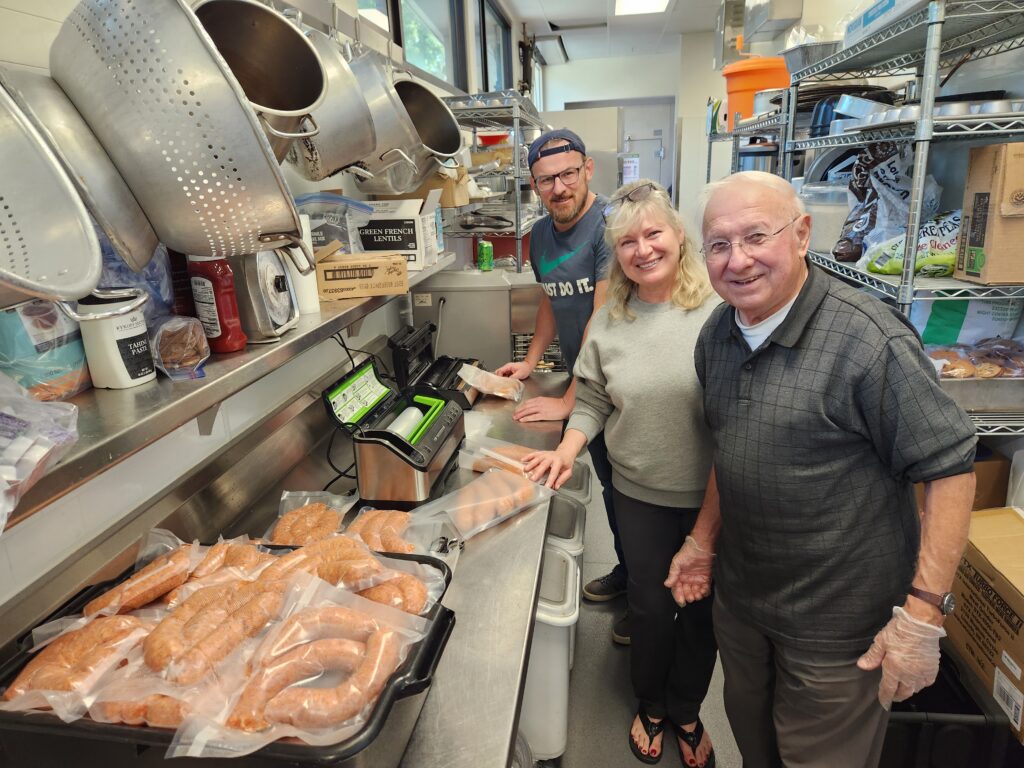
Another ongoing responsibility is organizing our annual picnic and our traditional pig-slaughter (disznótoros) dinner, which we always announce in advance as fundraisers for specific charitable causes. We make the sausages ourselves and always try to come up with a special dessert as well. A whole team works to ensure everything is prepared well and on time, and to draw as many attendees as possible. Father Maurus invests a lot of time and energy in making sure the raffle prizes find good homes at fair prices. The funds we collect through these fundraising events or receive as targeted donations—sometimes we get large checks, usually with specific purposes—are always handled separately and passed along as intended.
I had assumed that leading a Catholic mission was more abstract, mostly intellectual work—but now I see that a large part of it is quite everyday and practical. This triple mission seems to bind the community together.
Absolutely—these three pillars interlock like the teeth of a gear. We are one big family, held together by close friendships. Every Sunday, we eat lunch together, talk, and help each other out; we prepare for our events as a team. For us, it’s not only our faith that’s important, but also our connections. Because we share a common faith, we’re even more tightly knit than other Hungarian communities might be, those that don’t have faith as a binding force.
When I arrived in this area, I met the Reformed pastor Jenő Katona, and we used to attend each other’s events. Later, when I became president for the second time and Gábor Magyari-Köpe became the Reformed pastor, we developed not only a personal friendship, but also shared a goal—to bring together Hungarians in the San Francisco Bay Area by creating joint events where everyone can participate. It’s not just that Reformed congregants visit our events, but some of them also perform or assist with event planning or food preparations. Moreover, we try to organize events that non-believers can attend as well, like our national holidays or cultural programs. Bringing the local Hungarians together is no small task, especially considering the enormous distances, but we strive to do it, and fortunately, we have the physical space to do it: our own 400-seat hall and the Reformed Church’s new Cultural Center.
You personally knew four of the seven founding Benedictine fathers. What memories do you have of them?
When I arrived here as a young woman in my twenties, full of deep Catholic faith and great enthusiasm, Fathers Kristóf Hites, Pius Horváth, Egon Jávor, and József Jaszovszky all embraced and supported me. They gave me wings and helped me fulfill the goals of the Catholic Mission. I had endless ideas and energy—sometimes perhaps too much for the older priests! (laughs) Under the presidency of Kati Szabó, there was a lot of organizing going on, and I was involved as a volunteer. Later, Father Maurus and I introduced many new initiatives. While preserving tradition, I often sought to innovate, and in doing so, involve younger generations. For instance, I suggested creating a Hungarian library; with 56er András Rékay, we updated the old Hungarian telephone directory. I organized a talent contest and a cultural event about pig slaughter traditions during the dinners. I proposed launching an online newsletter and website, but there was resistance for years, as the priests saw the Mission more as a close-knit family. In 2005, Father Maurus recognized that we had to open up digitally as well, so we could finally create our website.
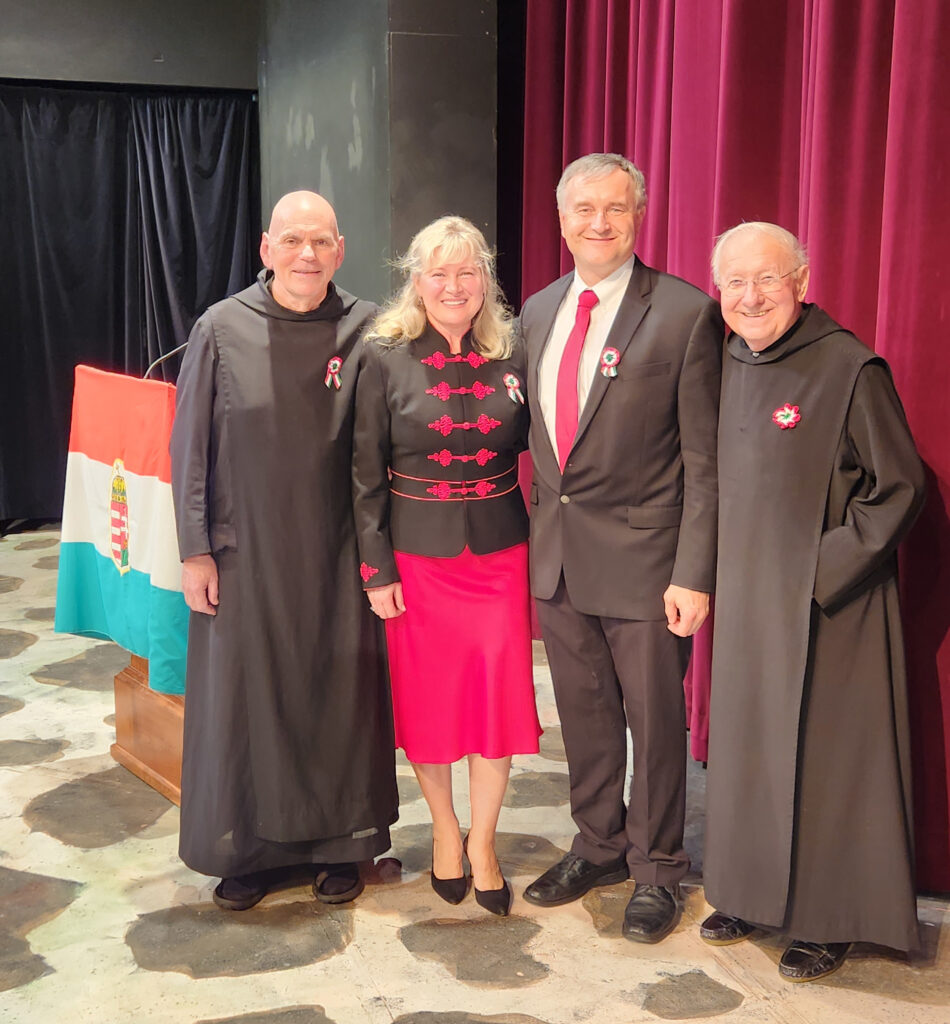
The fathers supported me not only in Mission-related matters but in other ways as well. For example, when I was preparing for my real estate agent exams, they let me use one of the classrooms after Mass and community lunch. While our kids were at Hungarian school and scouting with my husband, I could study there in peace and quiet. Father Egon would often greet me with: ‘Which room should I open for you today?’ Father Pius often told me how much he appreciated my work; he would always stroke my sons’ heads and speak with them. But it’s with Father Maurus that I’ve had the closest relationship: he performed our marriage ceremony, baptized our children, and asked me to be president.
At 88, Father Maurus is still full of energy and drive in leading both the Benedictine school and the Mission. You both seem like strong personalities, yet you work together in harmony. Tell us more about him.
Father Maurus has an incredibly deep faith, as well as fantastic organizational and speaking skills—there’s a businessman inside him, for sure. At fundraisers, he speaks in such a moving way that hearts melt and wallets open. I aim to bring in the highest possible number of attendees; he, in turn, brings out the greatest support from those who do attend. We really are similar in temperament, but not in a ‘too many cooks’ kind of way—it’s more like a twin-engine airplane: we give each other energy. We both take on any task that needs to be taken on: in addition to his priestly duties, he’ll clean or help set the table for lunch with me if needed. I, in turn, write long scripts for our national celebrations or give talks about the Mission. His humility toward work comes from the Benedictine mentality; mine is a legacy from my paternal grandfather. The latter once said: ‘Be useful every day—at least a little.’ I first heard that from him when I was a teenager, and I’ve tried to live like that ever since. Father Maurus likes to say: ‘Éva, for your volunteer work, the Good Lord pays you in Vatican currency.’ Throughout my life, even in difficult situations, somehow we’ve always come out with the least-bad outcome —whenever that happens, I tell Father Maurus: ‘Father, it seems that I again redeemed a little Vatican currency.’
That reminds me—at the Palm Sunday lunch you’ve organized, Father Maurus joked: ‘Zoltán has no choice but to join Éva and help.’ How did you meet your husband, and how is your family connected to the Mission?
I first met Zoltán in 1995, when he came for a one-week visit to the Dunai family. We only exchanged brief introductions at the time, but afterwards they basically acted as matchmakers. Zoltán is a physicist; he first came to the U.S. on a student visa, returned to Hungary, and after a couple of years, came back, earned his PhD at Vanderbilt University in Nashville, Tennessee, and started working in Silicon Valley. He dated me for a long time, mostly during my hospital dinner breaks. We got married on 31 May 1998. Our first son was born in December 1999, the second in December 2001.
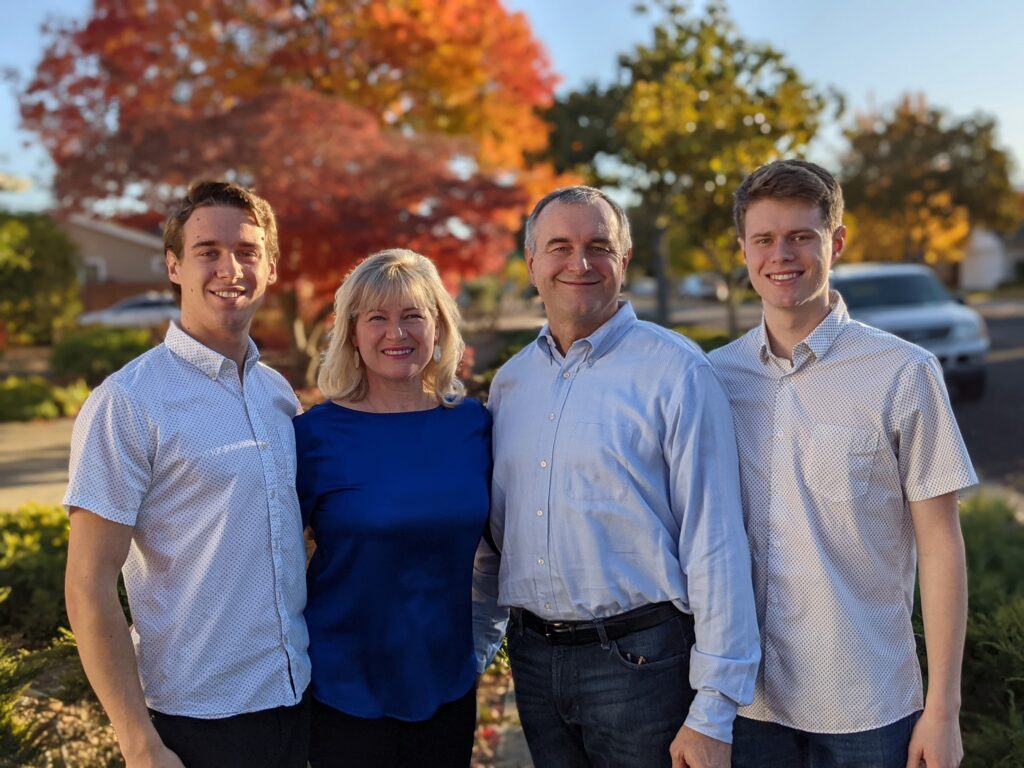
Zoltán and I were both raised Catholic, so going to church regularly and supporting the Hungarian community were completely natural for both of us. We even sent our sons to an American Catholic preschool, school, and high school, which accepted Father Maurus’s note explaining that every second Sunday, we attended the Hungarian church instead of the school’s church. It was a logistically and financially challenging commitment, but one we both agreed on wholeheartedly. Both boys attended the Hungarian weekend school and Hungarian scouting as well. The only thing they missed was the leadership training camps in Fillmore, New York, since those conflicted with the start date of their schools. They were the first members of the Mazsola folk dance group. The older child graduated from UCLA three years ago in computer science and finance and now works for a cryptocurrency company in New York. The younger one is about to graduate from the University of Colorado with a degree in aerospace engineering and computer science, and has secured a paid 10-week summer internship.
I assume you were enthusiastic Hungarian scout parents as well…
Since 1999, I’ve been a member of the so-called Maintenance Committee as the Catholic representative, whose primary goal is to ensure the financial background of the scout troop, that is, to organize and carry out fundraising. In addition, I was for years the president of the troop’s Parents’ Working Committee, whose task is to support the troop leaders. In October 2004, during the autumn camp, I volunteered as a cook for the first time, and the spoon has remained in my hand ever since, because people discovered that I can cook tasty meals in large quantities. For the past six years, our mountain home has hosted the scouts’ ski camps, even after our own kids had already flown the nest. In all of this, my husband is my right hand: during cooking, he mainly helps with the physical labor; in mission work, he supports me with technical matters. Of course, he does it gladly and voluntarily, never out of obligation. I mention him in every president’s report, because without him, I couldn’t manage any of this.
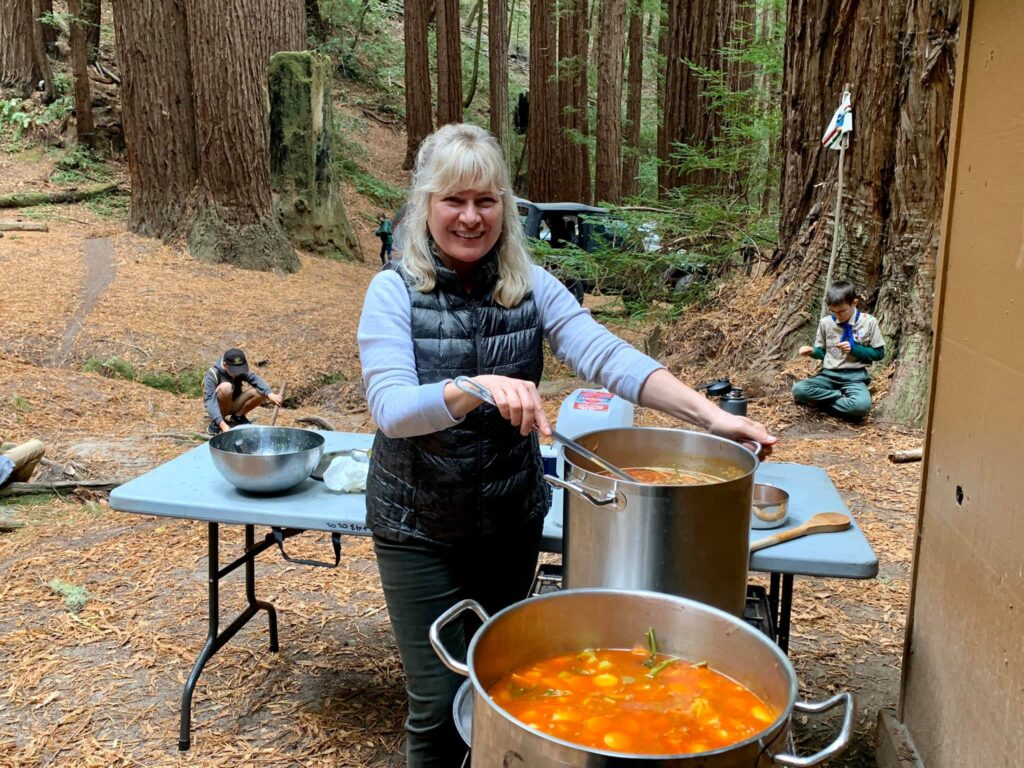
‘Éva, you can rest in the grave’ is another saying of Father Maurus that often comes to mind. I’ll turn 60 in August, but my mind and spirit still sometimes function like I’m 25 or 30—although I do see small signs that maybe I should start slowing down. Still, if in 20 or 30 years I’m as energetic, open, and modern as Father Maurus is today, that will be a divine blessing.
Read more Diaspora interviews:

